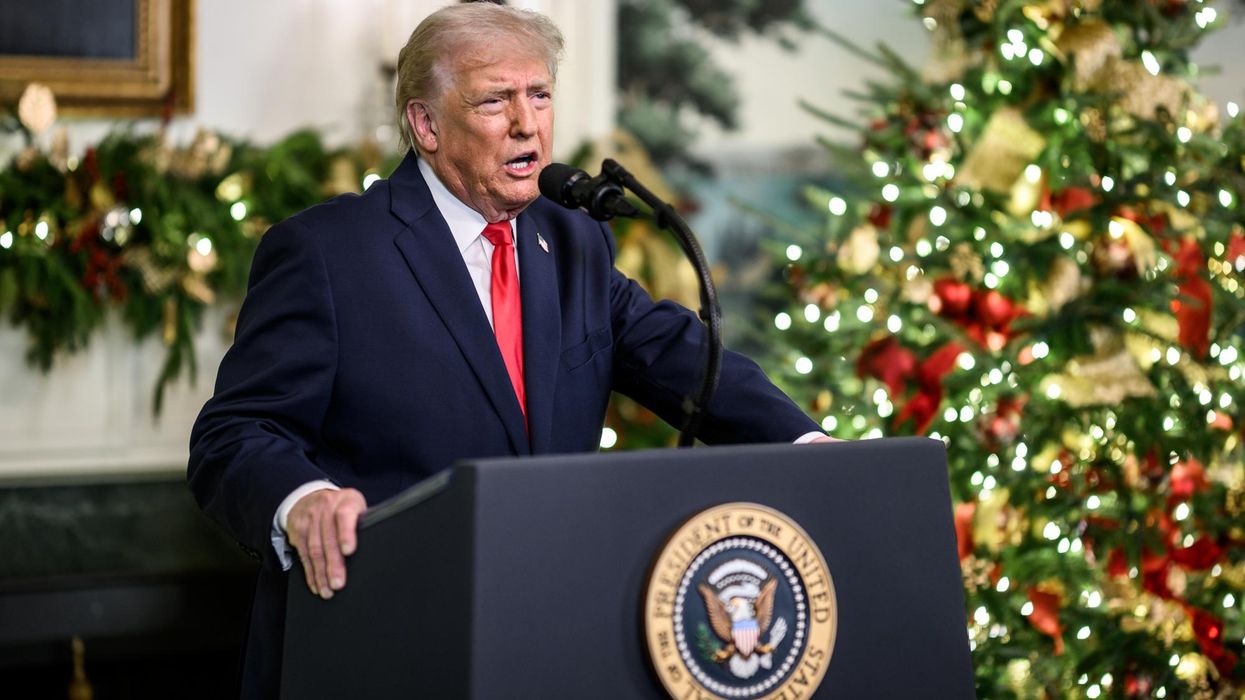On December 9, French President Emmanuel Macron and German Chancellor Angela Merkel presided over a meeting in Paris between Ukraine’s President Volodymyr Zelensky and Russia’s Vladimir Putin. This was Putin’s first meeting with Zelensky, a youthful leader who won a strong electoral victory in April on a platform of ending both Ukraine’s deeply embedded culture of corruption and its debilitating conflict against Russian-backed separatists in the Ukrainian east.
In Paris, Putin and Zelensky agreed to prisoner exchanges, withdrawal of fighters from the frontlines before March, and other steps toward implementation of a peace plan the two countries had originally agreed to in Minsk, back in 2016. Under the Minsk formula, which all four of the governments at the Paris meeting still use as their guide, Ukraine would regain control of its existing national border with Russia (except in Crimea, which was not discussed.) In return, Kyiv would grant the remaining Russian-speaking regions of Eastern Ukraine a special status within Ukraine and would agree to join neither NATO nor the European Union.
Many in the Western corporate media seem perplexed that Ukraine’s president might even contemplate any form of political and military neutrality toward Russia. These media prominently report the anti-Russian sentiments expressed by Zelensky’s domestic opponents — while they fail to remind readers that as recently as July, Zelensky’s brand-new “Servant of the People” party won 254 of the 424 seats in the Ukrainian parliament, precisely on the basis of his anti-corruption and anti-war stands.
A calmer look at the dynamic between Ukraine and Russia would note the many benefits that strategic neutrality might bring Ukraine. The most relevant example here is Finland and the intentional neutrality Finland maintained through the whole of the Cold War — and has to a high degree since.
In 1948, Finland signed a Cooperation Agreement with the Soviet Union, under which it promised to resist any armed attacks that "Germany or its allies" might launch against Finland, or against the Soviet Union through Finland — and to call in the Soviet military to help do this, as needed. Helsinki also had to say goodbye to around 10 percent of its land area, in the east, which was simply absorbed by the Soviets, and to agree to pay Moscow significant reparations in recognition of the damage that German-allied Finnish forces had inflicted on Russia during World War II.
That version of “enforced neutrality” was a tough pill for some Finns to swallow. But it allowed Finland to escape the decades of outright Soviet domination that plagued its Baltic neighbors in Latvia, Lithuania, and Estonia for as long as the Cold War lasted.
Finland’s neutrality turned out in many ways a blessing. The country’s economy and society prospered. Over the years, the United Nations has developed a very helpful assessment tool called the "Human Development Index" (HDI), which provides a broad measure of human wellbeing. The first year the U.N. assigned HDI scores to nations worldwide was 1990, which also marked the Cold War’s end. Finland’s HDI score in 1990 was 0.78, on a scale that runs from zero to an unattainably perfect 1.0. Russia, Estonia, and Lithuania all got 0.73, and Ukraine and Latvia got 0.70. Since 1990, Finland’s score has continued to improve. Its score this year is 0.92, on a par with the United States — though many people, like these writers in The New Times recently, consider life in Finland far superior to that in the United States.
Today, Finland is an enthusiastic member of the European Union. But until now, it has resisted all urgings to join NATO as a full member — while Latvia, Lithuania, Estonia, and many other formerly Soviet-aligned states have done just that.
Throughout the Cold War, pro-NATO commentators frequently used the term “Finlandization” as a slur to deride the country for refusing to join the Atlantic Alliance. In retrospect, though, the choice that Finland’s leaders made in 1948 seems pretty wise. During World War II, much of the country had been devastated by the fighting, in which Finland had initially sided strongly with the Germans. But after Helsinki and Moscow reached the 1948 Cooperation Agreement Finland enjoyed a high degree of internal peace that enabled it to rebuild and become the stable and relatively wealthy country it was at the Cold War’s end. It never demilitarized. But it was never trapped in NATO-like levels of military spending, either.
Finland and Ukraine have, of course, many differences. Ukraine’s population, at 44 million, is eight times the size of Finland’s. Ukrainians are also much poorer than Finns: per-capita effective GDP in Finland is five times greater today than that in Ukraine.
But Finland and Ukraine have much in common, too. Both countries’ peoples have lived for several generations in the shadow of their stronger Russian neighbor and today realize they need to craft wise policies in balancing their diplomatic and strategic stance between the competing demands of Russia and the West. Both countries’ leaders made the terrible choice during World War II of siding with the Germans, and ended up getting punished (though to different degrees) by Moscow for that choice. Both countries have lost non-trivial portions of the land they claim as their own to Russian control. Both countries now have young, smart, reformist leaders.
Here in the United States, most of the political elite seems unquestioningly to assume that it would be good for both Ukrainians and Americans if Ukraine were to join NATO (and in the era of the Washington impeachment hearings, the whole Ukraine-Russia nexus of policies has now become dangerously entangled in U.S. domestic politics).
In Paris and Berlin, however, cooler heads seem to be prevailing, as Merkel and Macron continue to work to nudge Putin and Zelensky toward de-escalation and a new entente. The German and French leaders almost certainly understand that if a lasting agreement between Kyiv and Moscow is to be attained, it will have to be based on Ukraine becoming essentially neutral between east and west. In today’s world, and with Finland’s intriguing record in front of us, let’s hope “Finlandization” can be seen as no longer a derisive put-down but a decent, workable model for nations in Russia’s borderlands.
















